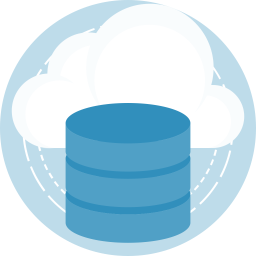Strategies for effectively implementing 360 views
Andres Baquero – May 27th, 2021

In a previous post, we discussed the definition of 360 views, their benefits and challenges, and the technologies to support their creation. So, how can organizations effectively build and manage a 360 view strategy?
See part 1: The benefits and challenges of 360 views
As most IT teams will tell you, data integrations are tough challenges but achievable with the right strategy. Customer data integration is the foundation of 360 views, ideal for marketing, sales and other efforts. However, stretched organizations IT teams can struggle to integrate disparate business solutions, systems, applications, and data sources quickly and efficiently.
These often occur as part of digital business initiatives or digital transformation efforts, which have greater overall value than point-to-point integrations which are resource-intensive to develop and hard to maintain.
Organizations are moving toward new integration approaches that promote faster integrations via ETLs, APIs and ‘low code, no code’ platforms to make it happen. Our clients use cloud platforms and ETL tools such as Azure Data Bricks, Informatica and Salesforce MuleSoft. These reduce the cost and effort to build, deploy at scale and maintain integrations by offering a flexible layer to quickly design, test and deploy to the cloud with minimal custom scripts or code.
Creating your 360-degree view is broken down into the following steps.
Automatically categorize and tag content
|
Supporting the building of a 360-degree view, data mapping and migration scripts help tagging fields when the content matches across and is commonly defined across sources to integrate. However, this approach struggles when the taxonomy is different across source systems, is not properly defined or there is a use of synonyms. Therefore, a combination of manual and assisted tag and categorization approaches can work better. For example, Azure cloud tools provide options to conduct data profile analysis per field. This, combined with the definition of metadata for matches across system field values can run an initial set of categorizations before migration takes place. Using cloud services and ETL tools, you can create forms for users to categorize data or use automated workflows to clean up, standardize and categorize data at scale, before syndication to a central repository. Also, the use of cloud cognitive services, text extraction tools, can help to speed up tagging thematic taxonomies (e.g. PoolParty, Synaptica. Smartlogic, ConceptSearching, Mondeca, among others) |
 |
Plan and create digital footprints
In advance, collect and prepare your data collection for future 360 views. Each time a prospect or customer visits your website, creates a ticket or interacts with your social networks, they leave digital footprints that can be mined later to understand their intent and behaviors.
Data warehouses can gather these touchpoints while Customer Data Platforms (CDP) collect and centralize marketing and operational data and/or CRM software such as Salesforce can be used to track and correlate these digital footprints.
Integrate with external datasets when possible
For a consumer or a donor contact, this may include data such as profession, education, personal income or net worth. When available, bringing this third-party data to your cloud warehouse to create more telling 360 views based on demographics, link consumer relationships and better profile the data.
Let a CRM do the rest
|
A CRM system is the perfect place to track all the touch points an already identified individual (either a customer or a lead) has with your organization. Create a data management strategy that allows you to push those touchpoints into the CRM (from legacy, operational and data warehouses). This can provide several advantages such as speed for building 360 view screen layouts, handling unique identifier record management and advanced analytics. For example, in the case of Salesforce, contact views can easily be configured to display data from multiple sources on the same screen without the use of any additional code. To manage issues like different identifiers across systems requires a robust set of rules and logic that a robust CRM system such as Salesforce can easily provide, using configurable flows or processes with no scripts. |
 |
Take advantage of cloud tools
Machine learning and dynamic algorithms in Salesforce and CDP and CRM software applications can leverage customer data for predictive analytics. Depending on the client needs, these native CRM processing algorithms or the implementation of custom ones for a specific client methodology, on a parallel cloud like Azure, do the job well. For example, to run revenue projections, define scores or predict attrition rates. The result of those can be then leveraged for easily display into the 360 CRM contact view.
Whatever your plans for a 360-degree view, understanding the common issues and any specific data problems within your organization are key to a success project.
If you want to find out how your organization can benefit from 360 views, CRM and advanced analytics services, you can contact us.
